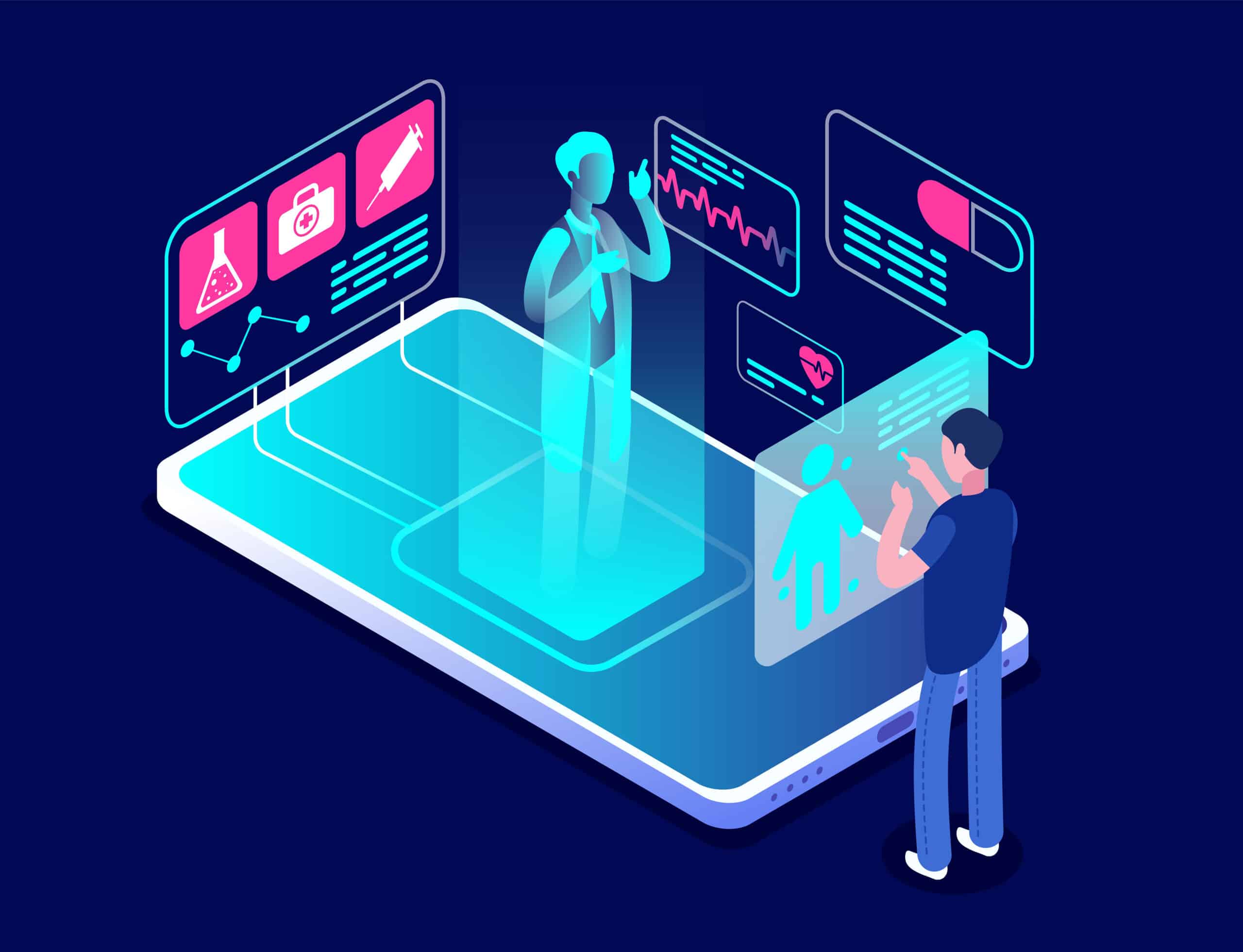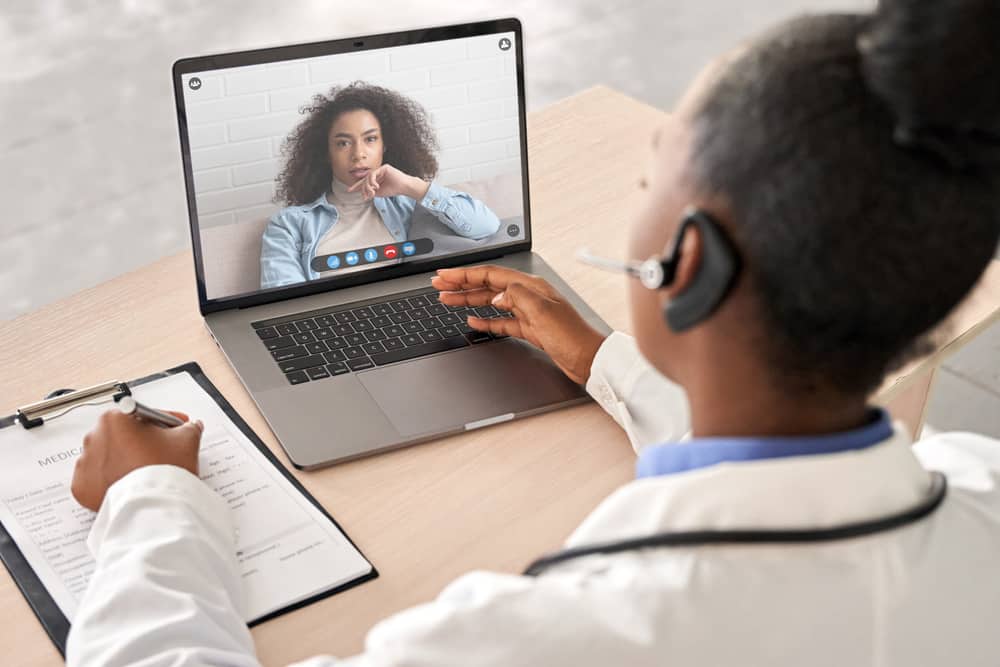Investing in Digital: A Look at the Refocused Customer Experience

This is the second part of a short series during the fall of 2020 that examines experiences and expectations in healthcare and/in the workplace. You can find the first part here.
The competitive landscape in the healthcare industry constantly evolves – often out of necessity. The pandemic accelerated several transformations, including telemedicine and remote workforce.
Necessity is defined as an unavoidable need or compulsion to do something. A pandemic is clearly a compelling force, as evidenced by how quickly healthcare providers acted. How these rapid changes impacted provider strategies is less obvious and will take months – if not years – to answer.
Let’s look at what these changes mean for healthcare’s customer experience.
New competition and expectations
Hospitals were used to competing with other hospitals, and over the past 5 years that has changed. Fortune 100 companies like Wal-Mart and CVS have entered the patient care market, forcing traditional providers to rethink their relationships with their community. Most are now mimicking the hotel, travel, and banking industries, placing their focus on patient service quality and delivering care in the most accessible ways possible.
The patient experience became front and center, and providers have invested hundreds of millions in to that cause. How will the industry measure the impact of telemedicine and remote workforce in relation to those investments?
More importantly, how will these movements impact the cost and quality of care?
Telemedicine
The massive adoption increases in telemedicine occurred because they had to. Patients having safe access to physicians during COVID-19 for standard visits was necessary, and telehealth was that avenue to millions of people.

A national quarantine and the cancellation of elective procedures led to different risks for many patients. Stratifying that risk without knowing the available resource utilization required pragmatic thought and careful consideration from providers in the early stages of the pandemic.
The results have been positive, and patient satisfaction scores early on have been encouraging.
For me personally, I had my first virtual visit in June, and I could not have been happier. Normally a doctor’s appointment requires a 20-minute drive (if I’m lucky) followed by a 30-minute wait and a 20-minute drive back to work. I checked in on my phone 10 minutes before my appointment, worked until the appointment started, and took a 10-minute call in an office. I would pay more for the same appointment because of the convenience and time added back into my day.
It’s important to remember that there was very little downside from a satisfaction standpoint. Patients needed prescriptions, but did not want to risk being in public.
Telemedicine solved that issue for millions. Many patients had their first virtual visit during the pandemic and had no historical perspective for comparison. As telemedicine evolves, so too will the expectations from consumers.
Easy access, being timely, and getting the correct bill for the visit are key components for providers to ensure satisfaction scores remain high. Outside of a small population of people who look forward to their office visits, it’s difficult to imagine consumers at large souring on virtual visits. How that corresponds to care quality is an entirely different subject and the more principal question.
In some businesses, the customer’s preference versus what is needed don’t align. Henry Ford is famously quoted for saying that if he asked his customers, they would have wanted faster horses. The examples are many, but in no other business does this reality exists more than it does in healthcare.
The shift to a virtual workforce
In mid-March, companies in most industries scrambled to send employees to work from home. This chaotic movement was necessary, and what started as an experiment has turned into an expectation.
According to an August study from Harvard Business School, 16% of Americans will continue to work from home after the pandemic. Employers in all industries must adjust numerous strategies around employee engagement and development. I’ve written several blogs making a case that hospitals that fail to adapt a virtual workforce plan will not optimize the talent level of their people within several business lines.
After experiencing the remote transformation at Harmony, I remain confident that a remote strategy for certain healthcare positions is crucial to retaining and hiring the best candidates in the marketplace.
Attracting the right people is a foundational requirement for any successful company. The next phase is people development, which is just as crucial to an organization’s success.

The energy involved is dependent on the role and the level of expertise required to achieve results. For instance, training a clinical documentation improvement specialist with significant experience virtually will require much less oversight than someone who is fresh out of school in a customer service role.
There are many key questions that should be considered, including:
- Is the role customer facing?
- What do customers expect out of this role?
- What are the historical pitfalls of someone in this position?
Organizational development strategies to level up employees is going to require innovation. A prime example of how this can be approached is Sharp HealthCare’s Gamify tool. It helps keep remote employees engaged and has seen positive results such as:
- reducing staff turnover to less than 5%
- increasing customer service productivity by 21%
- increasing employee productivity by 10% – 40%
Less innovative – but still effective – strategies include consistent team building sessions through video, consistent check-ins with staff, and intentional public acknowledgement of high performers.
Being engaged is a great start; however, overall performance requires continued knowledge transfer and talent development. There are numerous cloud-based platforms built specifically for remote workforce training. Most include communication pathways for important updates and content that can be read and/or consumed via video. The effectiveness of this approach for many business units in healthcare is a work in process.
The Harmony customer experience
Our transition home was complicated by landing a massive engagement the exact same week. A national health system faced offshore disruption and needed hundreds of coding professionals to overcome the challenge. The word “excuse” is not in our company DNA, so instead of being crippled by the unknown, we plugged in at home and got to work.
In less than 2 weeks, we onboarded 181 coders for our client and did so while completely revamping our back office operations. We had to adjust nearly every process we had in place for onboarding, and other challenges cascaded from there. While we were far from perfect, the results were resounding successes. In the weeks and months that followed, we were able to successfully maintain our business working remotely.
In July, we started phasing our corporate employees back on-site with exceptions in place for anyone with higher risk. Temperature checks and other protocols were established that were unneeded in a virtual setting.
It would have been easier to ride out the storm with everyone at home; however, maintaining business in the staffing industry really means a company is declining. A big part of the value we bring to customers is our collective experience and the of sharing ideas and information in real time.
We have 40 corporate employees ranging from 5 months of experience to 30 years. Our senior people help the newer people see around corners, give advice, and explain small details that make a big difference to our clients and consultants. These learning opportunities are not always sit-down conversations with a mentor. Many are impromptu taps on the shoulder from someone in real time that says, “try this,” “that means x,” “ask this question,” etc.

Our newer employees have access to a decade of examples, success stories, and people that can help identify red flags. We believe strongly that shared industry experience is a key ingredient that differentiates our service. The way we go to market selling our service and recruiting involves less knowns in a normal workday compared to many production roles in healthcare.
As providers evaluate their virtual workforce strategy, understanding the importance of real-time interactions in relation to performance will be critical to the overall customer experience.
Looking ahead
The customer experience in any industry is evolutionary and requires constant updating. We have examined every part of our business over the past year and have recently adjusted important strategies with our customer in mind.
Our initial modifications were reactions to COVID. The most recent changes have been proactive and focused on our big picture vision of what we stand for and our organizational goals.
We’ve changed how we go to market with long-term relationships as the focus of the overarching strategy. Every provider in the country will have a dedicated Harmony contact moving forward within each service area. We believe our service levels will benefit from increased knowledge of each team member, so we have narrowed the focus of our client solutions team.
While we are deeply passionate about our mission, the stakes are much higher for the healthcare industry where the service outcome is patient care.
The pandemic has compelled necessary reactions, and in a strange way created an opportunity with telemedicine. There will be other opportunities as well and understanding how/if the virtual workforce is engaged and has the training to be successful is paramount.
Asking hospitals to implement and manage altered business functions while continuing to provide care in an unknown climate is just one more challenge to a growing list.
It’s important that service line leaders throughout the revenue cycle understand the internal dynamics of the team(s) they lead:
- How does the team learn and how might operating remotely impact individual growth?
- Will working virtually change they way hospital staff interacts with patients?
- Do they have service providers that can help assist with any short-term gaps and long-term strategies?
There are more questions than answers for many customers we serve and communicate with on a daily basis. Our team does not have all the remedies either, but we do have an amazing assembly of talented people that do have answers. We’re committed to providing service with our client and candidate experience as the top priority.
Creating an environment for an engaged workforce is important to delivering a great service to customers. Ensuring a positive customer experience is essential competing in today’s marketplace. In the staffing industry, performance is the ultimate indicator of a customer’s experience. In healthcare, the ultimate definers of success are care outcomes.
Learn more about why your organization should partner with us here.
Subscribe to our monthly newsletter here.
Join our Facebook community here | Join our LinkedIn community here





